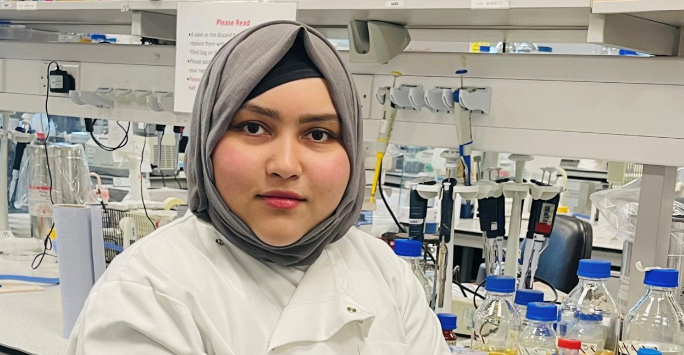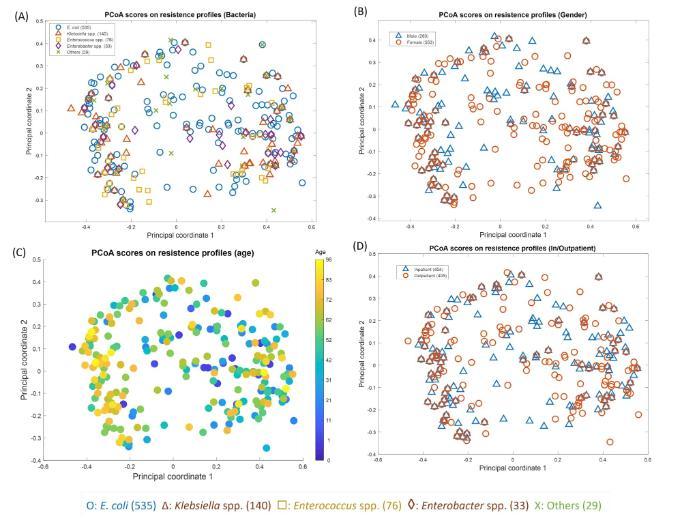
Sara Sadia Chowdhury is a PhD student in the Department of Biochemistry, Cell and Systems Biology. Here Sara discusses her research into antimicrobial resistance in urinary tract infections.
Your name and your area of research
My name is Sara Sadia Chowdhury, and I am a PhD student in Professor Roy Goodacre’s group at the Centre for Metabolomics Research (CMR). My research focuses on metabolome analysis to understand antimicrobial resistance (AMR) in uropathogenic Escherichia coli (UPEC).
What was the title of your first paper and who was it submitted to?
The title of my paper was "Trends in Antimicrobial Resistance of Uropathogens Isolated from Urinary Tract Infections in a Tertiary Care Hospital in Dhaka, Bangladesh." It was submitted to the journal Antibiotics, published by MDPI. The paper can be accessed online at the following link: https://www.mdpi.com/2079-6382/13/10/925

How would you explain what this paper was about to your grandparents?
We studied why some bacteria that cause urinary tract infections (UTIs) are becoming harder to treat with the usual medicines. UTIs are infections in parts of the body like the bladder or kidneys, and they can make people feel very unwell, especially women. We looked at thousands of urine samples from a large hospital in Dhaka, Bangladesh, and found that many bacteria were no longer being killed by common antibiotics. Two types of bacteria, E. coli and Klebsiella, caused most of these infections, and they were often resistant to medicines. The good news is that we found some antibiotics, like amikacin and cefixime, that still work well against these bacteria. We also checked if age, gender, or whether someone was in the hospital made a difference in how resistant the bacteria were, but we didn’t find any clear pattern. This study helps doctors choose the best medicines for UTIs and reminds us why it is important to keep monitoring how bacteria change, so we can stay ahead with effective treatments.
What was the most significant thing for you about that paper?
The most significant aspect of this paper was its focus on antimicrobial resistance (AMR) in urinary tract infections (UTIs), particularly the patterns of multidrug-resistant (MDR) uropathogens. The study found that factors such as age, gender, and patient status did not significantly influence AMR patterns. It emphasised the critical importance of localised, ongoing surveillance of resistance patterns, which is essential for clinicians to select appropriate antibiotics, ensure effective management of UTIs, and address the rise of MDR bacteria. This highlights the need for continuous regional monitoring to inform treatment decisions and effectively combat AMR.
What advice would you give to others about submitting their first paper?
The most important advice I would offer is to start writing early and remain patient and persistent throughout the process. When it comes to publishing, carefully selecting a journal that aligns with your research focus is crucial. It’s important to prioritise relevance over the journal's impact factor to ensure your work reaches the appropriate audience and has a meaningful impact. Additionally, collaborating with supervisors and peers is essential, as their feedback provides valuable perspectives that can significantly improve the quality of your work.